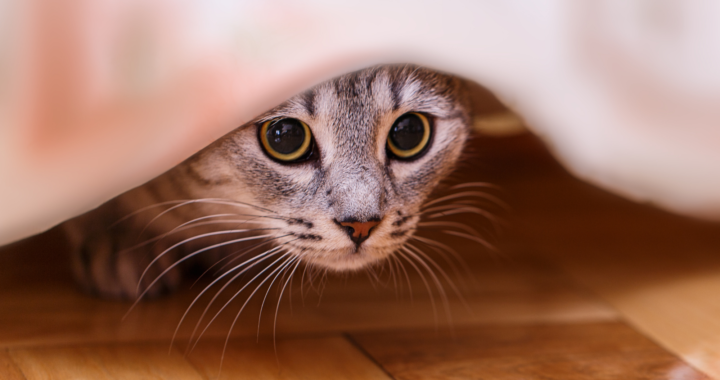Lorem ipsum dolor sit amet, consectetur adipiscing elit. Ut elit tellus, luctus nec ullamcorper mattis, pulvinar dapibus leo.
Stress isn’t just a human problem—pets, particularly cats and dogs, can also experience stress in various forms. Stress in pets can lead to behavioral changes, health issues, and overall discomfort. Just like us, pets can feel overwhelmed by certain situations or environments. Understanding what causes pet stress, how to recognize it, and how to prevent and relieve it is essential for maintaining your pet’s well-being. In this article, we’ll explore the causes of stress in cats and dogs, the dangers of chronic stress, and how you can help your pet stay calm and happy.
### What Causes Stress in Cats and Dogs?
**1. Environmental Changes**
Pets are creatures of habit, and any change in their environment can trigger stress. Moving to a new home, renovations, or even rearranging furniture can unsettle your pet. Dogs, in particular, may become anxious if their routine is disrupted. Cats may hide or act out when exposed to unfamiliar surroundings or people.
**2. Lack of Socialization or Attention**
Dogs are social animals that thrive on interaction with their owners and other dogs. Extended periods of isolation or neglect can make them stressed and anxious. Similarly, cats may become stressed when they don’t get enough mental stimulation or if their interaction with you is limited.
**3. Loud Noises**
Both cats and dogs can be startled or frightened by loud noises such as thunderstorms, fireworks, or construction sounds. Dogs may exhibit destructive behavior, while cats might hide or act defensively.
**4. Changes in Routine**
Pets are sensitive to changes in their daily routines. Dogs, for example, may get stressed when their walk schedule is interrupted, or if they’re not fed at the usual time. Cats can become agitated if their feeding or litter box routines are altered.
**5. New People or Animals**
The introduction of new pets or people into your home can be a cause of stress for both cats and dogs. Dogs, especially, may feel threatened by a new animal in the household, while cats may become territorial or anxious about new visitors.
### The Dangers of Stress in Pets
Chronic stress in pets can have serious physical and mental consequences. Some of the dangers include:
– **Behavioral Problems:** Stressed pets may develop undesirable behaviors, such as excessive barking, chewing, scratching, or urinating outside the litter box.
– **Health Issues:** Prolonged stress can weaken the immune system, making pets more susceptible to illness and infections. It can also cause gastrointestinal problems, like diarrhea or vomiting, as well as skin issues.
– **Aggression or Withdrawal:** A stressed dog or cat may become more aggressive or, conversely, may withdraw and stop interacting with people or other pets. This can affect their relationship with you and other animals in the household.
– **Depression:** Just like humans, pets can suffer from depression when stressed. They may become lethargic, lose interest in food or play, or exhibit signs of sadness.
### How to Prevent Stress in Pets
**1. Maintain a Consistent Routine**
Try to keep your pet’s feeding, playtime, and walks at the same time every day. Routine brings comfort and security to pets, and sticking to a schedule can minimize stress.
**2. Create a Safe Space**
For both cats and dogs, a designated “safe” space in your home where they can retreat when feeling overwhelmed is essential. For dogs, this might be a crate or a quiet room. Cats may appreciate a cozy hiding spot or perch.
**3. Gradual Introductions**
When introducing a new person or animal to your home, do so gradually. Give your pet time to adjust and always supervise initial interactions. This will help prevent feelings of territorial stress or anxiety.
**4. Provide Mental and Physical Stimulation**
A bored pet is a stressed pet. Regular playtime, interactive toys, and puzzles for cats and dogs can keep them mentally stimulated and satisfied. Dogs need daily walks and exercise to burn off excess energy, while cats enjoy interactive play and climbing structures.
**5. Minimize Loud Noises**
When possible, keep your pet away from loud noises, especially during thunderstorms or fireworks. For dogs, you can try calming aids such as thunder jackets or noise-reducing headphones. Cats may benefit from being allowed to retreat to their hiding spots when noise levels rise.
### How to Relieve Stress in Pets
**1. Provide Comforting Aromas**
Certain scents, like lavender or chamomile, can have a calming effect on pets. Consider using pet-safe essential oils or sprays to soothe your cat or dog during stressful moments. Always ensure that the scent isn’t overwhelming or harmful to their sensitive noses.
**2. Use Calming Products**
There are several calming products on the market, such as pheromone diffusers, calming collars, and stress-relief supplements. These products can help reduce anxiety in pets, especially during stressful situations like travel or changes in the household.
**3. Exercise and Play**
Physical activity is one of the best ways to relieve stress in pets. A good walk or a fun game of fetch can help release pent-up energy and reduce anxiety in dogs. Cats benefit from interactive play, like chasing a toy on a string or using laser pointers.
**4. Offer a Gentle Routine for Grooming**
Some pets find grooming soothing. Regular brushing can help reduce anxiety, particularly in dogs and cats with long fur. It also helps create a bond between you and your pet while keeping them comfortable and healthy.
**5. Veterinary Care**
If you notice that your pet is frequently stressed or exhibiting signs of anxiety, it’s important to consult with your veterinarian. In some cases, stress can be linked to an underlying medical condition. Your vet can also recommend behavior modification strategies or prescribe medication if necessary.
### Conclusion
Stress is an inevitable part of life, but when it affects your pets, it’s crucial to recognize the signs and take proactive steps to reduce it. By creating a stable and comforting environment, providing regular physical and mental stimulation, and being mindful of potential stress triggers, you can help your cat or dog lead a calmer, happier life. If stress becomes chronic or overwhelming, always reach out to a veterinarian for support and guidance. Keeping your pets stress-free is a key part of ensuring they stay healthy and enjoy a fulfilling life by your side.



